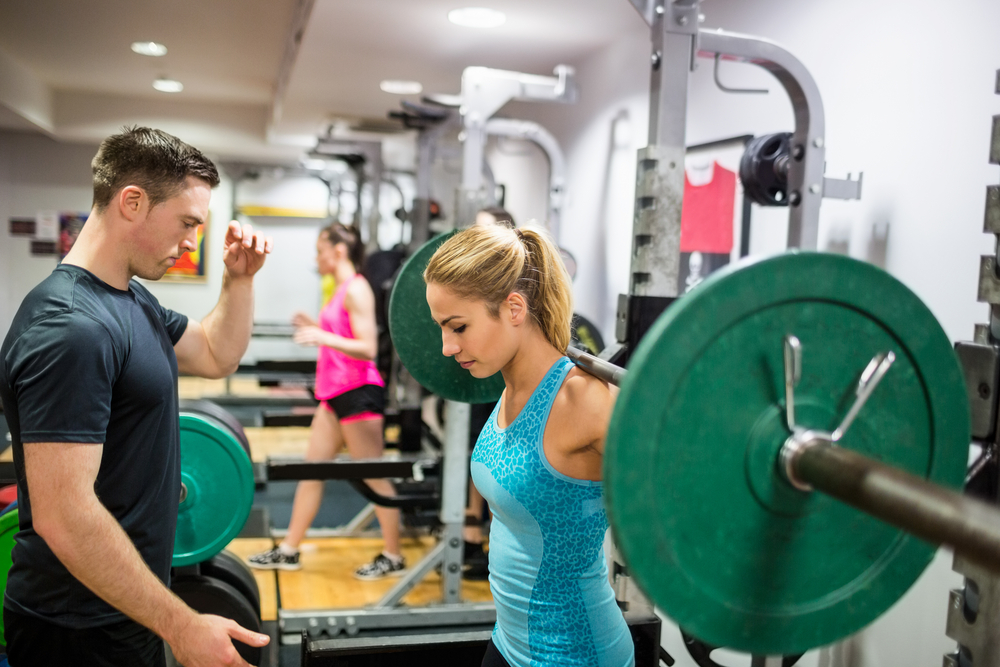Barbell for glutes
In this article, you will some variations of common barbell exercises to train different body parts.
Barbell for triceps
The triceps are often trained by using dumbbells or pulley systems. Triceps extensions in different positions are effective and popular. But did you know that you can also use the barbell for great results for your triceps?
If it is muscle growth you are after it is good to stay in the 8 - 12 repetitions per set range. Usually done for 3 to 6 sets. It is strength gains you are after work with 3 to 8 repetitions a set for 3 to 5 sets. Some variations to use the barbell to train your triceps are:
-
Close grip bench press
-
Skull crushers
-
JM Press
The close grip bench press is a variation on the regular flat bench press. You grip the bar as close as you can on the knurling. As this gives you less leverage go down in weight. This shifts the muscle activation from the chest more towards the triceps. This is a great accessory exercise that you can throw in after competing for your regular bench press sets.
Skull crushers are a variation on the bench press. Keep the same grip as with your bench press. Maybe slightly narrower depending on what works for you. Rushed than going straight down to your chest, break the movement with your elbows. Live the bar towards your head. The movement is basically a dumbbell tricep extension on both sides at the same time. The only difference is that you are holding a barbell. I find this exercise highly effective to boost my bench. The first time I saw it was on Mark bells channel when he featured Eric Spoto.
The JM press is a combination of the close grip bench press and skull crushers. It uses a similar path as skull crushers by breaking at the elbows but stays closer to the chest than the head.
Barbell for glutes
The glutes are a simplified version of the muscles that surround the upper leg and hip. Some also use it synonymously for your butt cheek. Your glutes are made of three muscles, the gluteus Maximus, medius and minimus. This is Latin for big, middle and small in size.
There are several ways to train the glutes with a barbell. The following three are in my opinion the most effective.
Back squat
The most obvious one and a staple in powerlifting and Olympic weightlifting. The barbell back squat has the barbell on your back in a high bar or low bar position. This position is mainly determined by how wide or narrow you grip the bar. The narrower the grip the higher the bar on your back. From there you squat down as low as your mobility allows and come back up to the starting position. This is one repetition.
To get the maximum out of the back squat for your glutes, squatting to full depth is recommended. If you lack the mobility to go very deep, avoid progressing in weight until you have control of a lighter weight through the full range of motion. This will ensure you keep a nice, round ass instead of an overtrained back compared to your butt.
Good morning
The Good morning is a great accessory exercise for weightlifters. It starts with the bar on your back as for the squat. Instead of lowering your butt as in the squat, your buttocks will stay level. Lean forward until you come to a 90-degree angle. Take a very short pause there, no longer than a second. After this, squeeze your butt and bring it forward while straightening yourself.
The good-morning is great to train the glutes and lower back to get them ready for the real heavy Lifts.
Romanian deadlift
The Romanian deadlift is a variation ok the deadlift and can be harmful. While it has a lower risk of spine compression than the Good morning and barbell squat, it lacks in full body activation. It is a good exercise to break through sled impose barriers and general assumptions.
Barbell for chest
This is where most people start out. While the deadlift and squat often intimidate beginners everyone seems to be happy to bench press. Even though it is way easier to get trapped under the bar this way.
Bench press
This is the classic flat bench press. Even though it is a great exercise it Igor not be the best to pump up your chest. Based on how wide your grip is the bench press can become more triceps than chest heavy. That is what happened to me. My triceps are quite big while my chest is poor in comparison. If you want to make your chest grow, do more than just the regular bench press.
Incline bench press
The incline bench press puts the bench at an upward angle for the starting position. The more upright the bench, the less weight you will use. On the extreme end, you will end up in a seated military press.
The incline bench press will train the upper part of your chest more and also spill over into your shoulder and traps.
Decline bench press
The decline bench press pursues the same idea as the incline by tilting the bench in the other direction. For this exercise, I would recommend working with a spotter at all times as it can get nasty when you lose control. The bar will pass your face in some way if you mess this one up with no one to help.
The decline bench press targets the lower part of your chest more. You might even be able to bench a little more this way than with the regular flat bench press.
Wide grip bench press
The wide grip bench press shortens the range of motion for the bench press. It also focuses more on the chest than triceps activation. The added stretch usually helps to build a bigger chest. Go lower in weight if you normally bench press with a closer grip and ease into the new motion to avoid tearing of your skin around the armpit. You can get stretch marks like a pregnant lady in this area if you do too much too quickly. While they are only cosmetic and do not hurt, they are still not very pretty and can be avoided.
Barbell row
Rows are probably the most underutilized exercise in the gym. As a rule of thumb you should do some variation of a row for any repetitions and sets as you do the bench press. This will give you a good balance in your upper body. Some of the popular variations are:
-
Bent over row
-
T bar row
-
Pendlay row
the vent over row is probably most known. You pick the bar up from the ground and bring it up to hip height. From there you lower to the knees to keep your back straight. After this you start rowing. There is a debate out there if whether or not to use momentum from the body. I say if you go for strength use momentum. If you are aiming for maximum pump, don’t use momentum.
The Pendlay row is a vent over row from the ground. This prolongs the range of motion and also takes out some of the momentum as you begin from a dead start.
The t bar row is a variation of the bent over row which centers the weight between your legs. The mechanics are very similar to the bent over row. Still, putting the weight at the center makes it a good variation to build strength.


